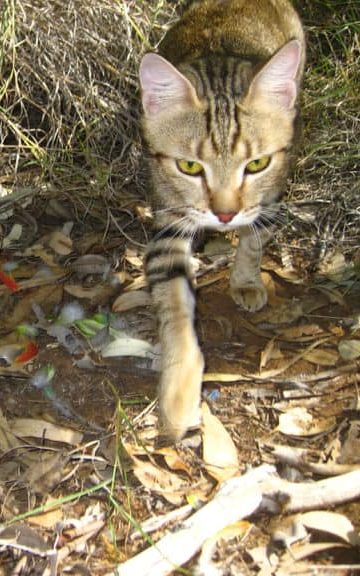
The federal government will now implement greater protections for plants and animals through new species recovery plans including an action plan on feral cats.
Public consultation on the plan is open until December 2023 via the government’s environment department website.
Blair MP Shayne Neumann welcomed the announcement on National Threatened Species Day, September 7.
“We don’t accept environmental decline and extinction as inevitable,” Mr Neumann said.
“[We are] committed to protecting our precious species and leaving nature better off for our kids and grandkids.”
The government will invest over $500 million to directly boost outcomes for threatened native plants and animals and tackle invasive species, while also strengthening national environmental laws.
This includes updated analysis of threats to and recommended courses of recovery action for 2 birds, 2 frogs, 1 reptile, 5 mammals, 10 plants, and 15 ecological communities.
And a further 48 species, including threatened plants, frogs, freshwater crayfish, insects, and reptiles are now given greater protection under Australia’s national environmental law.
In addition, the government has developed recovery roadmaps for the Maugean Skate, Swift Parrot, native macadamia, and yirrkoo (water mouse).
The September 7 date honours the day that the last known surviving Tasmanian Tiger died.
Feral cat action plan
Consultation is now open for a new ‘threat abatement plan’ to stop feral cats from decimating native wildlife and driving vulnerable native species to the brink of extinction – predatory behaviour referred to as “predation”.
Feral cats are those once owned and domesticated but that now live outdoors while avoiding human contact.
Mr Neumann said the plan sets new goals to reduce feral cat numbers across Australia. Goals include no new extinctions, and making sure cats do not further threaten or endanger native species.
“I want to see a feral cat free Australia. If we are serious about protecting our precious threatened species, then we have to tackle one of their biggest killers,” he said.
“Cats kill two billion reptiles, birds and mammals every year in Australia. That’s almost 6 million every night.
“[They] played a role in Australia’s two latest extinctions. And they are one of the main reasons Australia is the mammal extinction capital of the world.”
Already implicated in 28 mammal extinctions, predation by cats continues to endanger over 200 nationally listed threatened species – including bandicoots, bilbies, bettongs and numbats.
They can also carry infectious diseases transmissible to native animals, domestic livestock, and even humans.
Their hunting of local wildlife is one of the devastating consequences of pet owners allowing cats to roam outside, according to the RSPCA and other animal welfare organisations.
Local vets strongly urge cat owners to keep their cats indoors or alternatively install outdoor enclosures.
This not only protects wildlife but also considerably extends the cat’s own life expectancy.

Protecting Ipswich’s black cockatoos

To mark Threatened Species Day, Mr Neumann attended an ‘Animal Meet and Greet’ at Parliament House to get close and personal to some precious native animals and learn about the government’s new protection measures.
Priam Australia’s Daniel Gowland demonstrated one such endangered species – the Glossy-black Cockatoo – which calls the Ipswich and Brisbane region home.
It is one of five iconic black cockatoo species – including the Red-tail, Yellow-tail, Baudin’s, and Carnaby’s Cockatoo.
“There are only about 1,000 of these beautiful birds left in the wild, so we need to do everything we can to protect them,” Mr Neumann said.
The birds are surveyed in an annual census, the ‘Great Cocky Count’ – held every year since 2009 through BirdLife Australia – made possible with the help of volunteer citizen scientists.
These cockatoos perch atop gum trees where they caw loudly and distinctively while feeding on gumnuts.
The Red-tailed Black Cockatoo is significant in Aboriginal storytelling, with its red tail said to have introduced fire to the first people of Australia.
Public consultation on the new feral cat abatement plan is open until December 2023. Submitted via the consult.dcceew.gov.au website.
See also: Retired police officers to branch out
